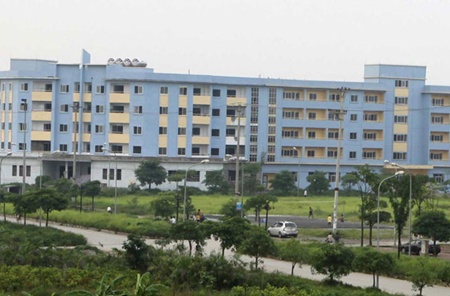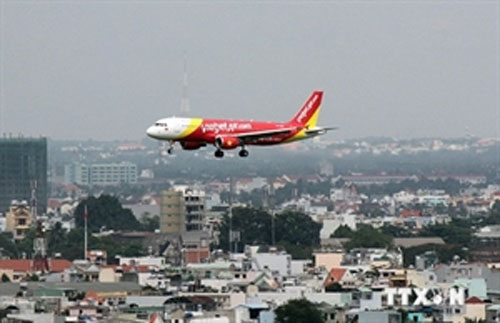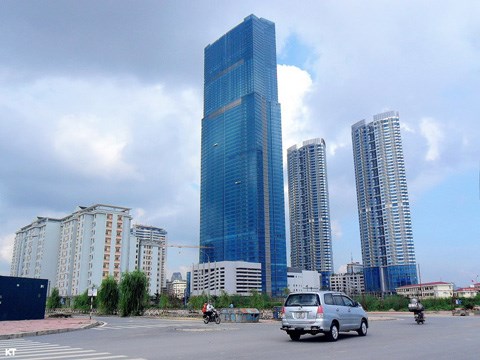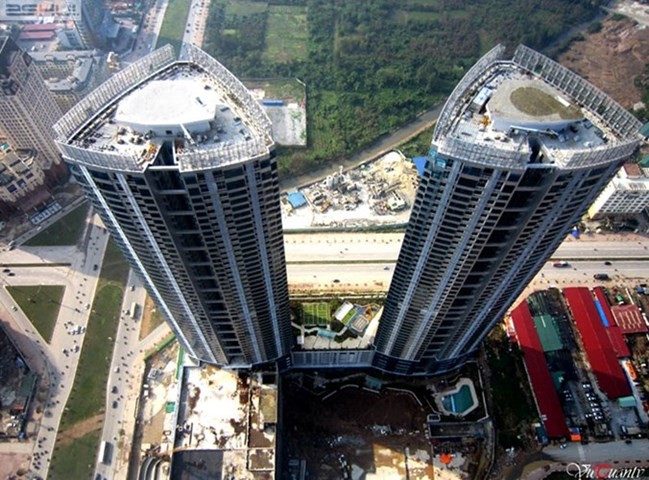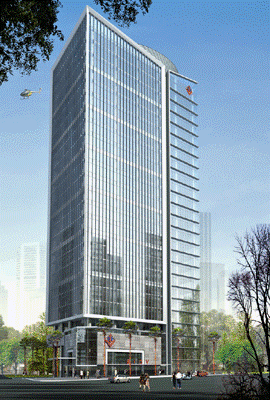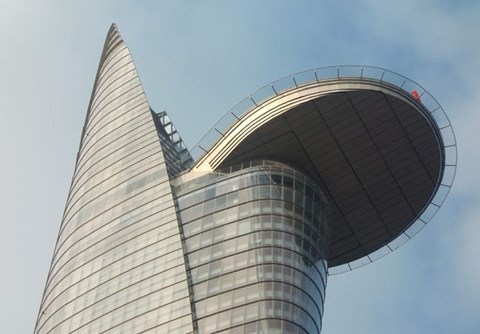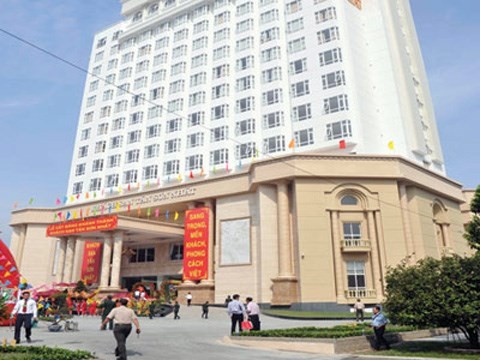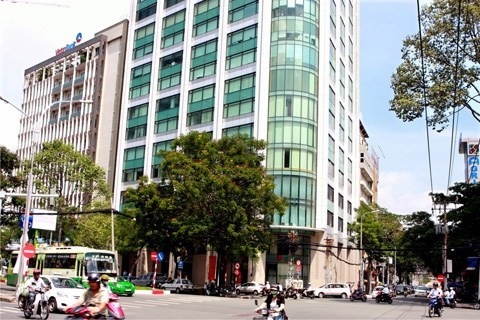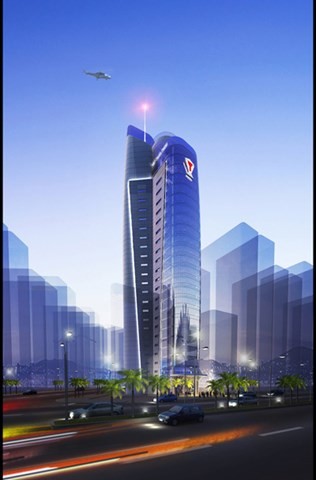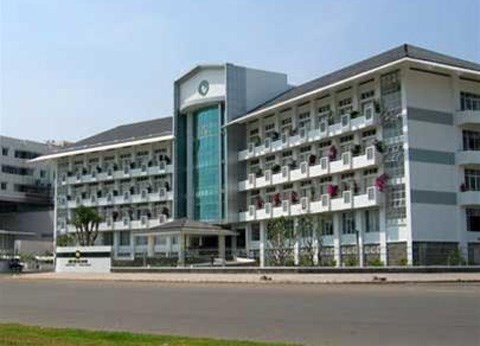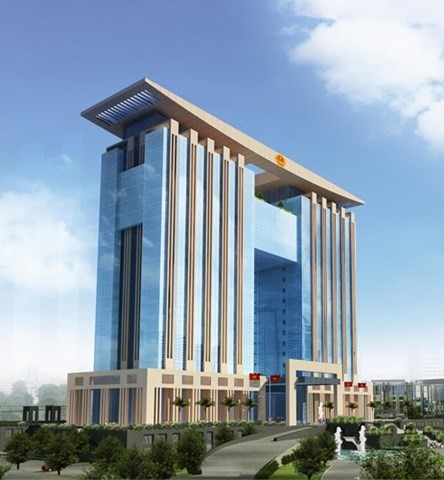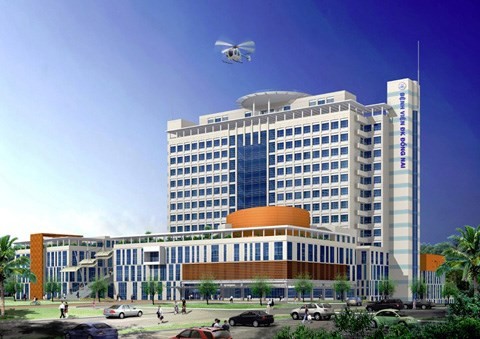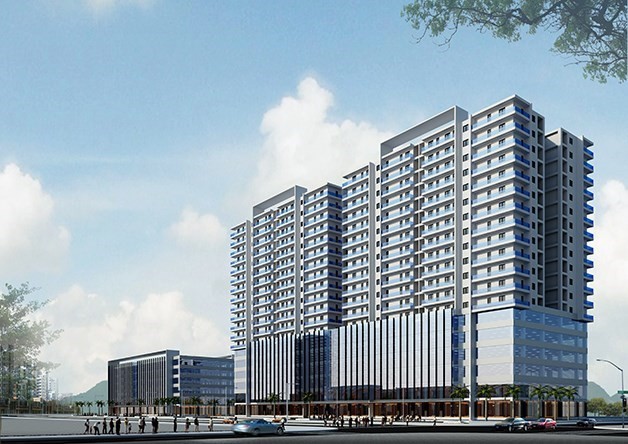BUSINESS IN BRIEF 25/7
US life insurer enters Vietnam The Ministry of Finance has granted a license to the BIDV Metlife Insurance Co. Ltd for its establishment and operation in Vietnam. The company is a joint venture between the leading US life insurer Metlife, Inc. and the Bank for Investment and Development of Vietnam (BIDV) and BIDV Insurance Corporation (BIC). The joint venture has a charter capital of VND1 trillion (US$48 million), with the US giant owning the most 60%. BIDV Metlife initially focuses on providing life and health insurance products. National CPI rises 0.23% in July The nation’s consumer price index (CPI) for July rose by 0.23% over June and 4.94% over the same period a year ago, according to the General Statistics Office (GSO). Among the baskets of goods used in the CPI calculation, transport services recorded the highest growth (0.44%), followed by construction (0.43%), food and services (0.26%), and beverages, cigarettes, garments, hats, and footwear (0.2%). Only post and telecom services saw a decline (0.01%), which is well within the statistical margin of error, while other goods witnessed slight rises of less than 0.3%. Earlier, Hanoi and HCMCity announced their CPI indices for July at 0.18% and 0.12% respectively. HCM City seeks business opportunities in Argentina A business delegation from Ho Chi Minh City paid a visit to Argentina from July 22-23 to learn urban management experiences and explore cooperation opportunities with the second largest Latin American country. The delegation, led by Vice Chairman of the HCM City People’s Committee Nguyen Huu Tin, held a meeting with Vice President of Buenos Aires Legislature Maximiliano Ferraro, and briefed the host on HCMCity’s socio-economic achievements in recent years. At the meeting, Tin highlighted fruitful cooperation activities between Vietnam and Argentina, emphasising the visit of President Cristina Fernández to Vietnam in 2013, saying it brought a breath of fresh air to their relationship, opening up a wealth of opportunities for enhanced cooperation. He noted that HCMCity and Buenos Aires share many similarities and hold great potential for cooperation, especially in tertiary education, trade, tourism and the service sectors. Many businesses in HCMCity are keen on the Argentinean market, he added. During their Argentina visit, the Vietnamese delegates also worked with Prenova group - a leading technology analysis and consulting firm in Argentina. The Vietnamese delegation was scheduled to fly to Cuba on July 24 before concluding their trip, which also included stops in the UK and Venezuela. Vietnam, Angola strengthen trade cooperation A Vietnamese business delegation, led by Deputy Minister of Industry and Trade Tran Quoc Khanh paid a working visit to Angola from July 21-23, aiming to bolster trade cooperation with the Southern African nation. During their visit, the delegation met with Angolan business community leaders and governmental officials to discuss socio-economic development plans and alternative proposals to enhance bilateral economic and trade cooperation. Angolan leaders reaffirmed their commitment to elevate the long-standing ties between the two countries and thanked Vietnam for assistance in the fields of health care and education during its difficult times. They also voiced their hope that Vietnam will cooperate with Angolan businesses in the areas of agriculture, fisheries, agro-processing industry, textiles, motorcycle assembling, and coffee cultivation and processing. Angola is eager to negotiate and sign agreements with Vietnam to stabilize the price of rice on the Angolan market, they said, pledging to support import and export activities between Angola and Vietnam, as well as Vietnamese business operations in Angola. The two sides agreed to jointly organise celebrations of the upcoming the seventh session of the Intergovernmental Committee and the 40th anniversary of bilateral diplomatic ties in 2015. Within the framework of the visit, a Vietnam-Angola trade forum was held, attracting a huge number of Angolan and Vietnamese businesspeople. PVEP asked to boost overseas investment Deputy Prime Minister Hoang Trung Hai has proposed that PetroVietnam Exploration Production Corporation (PVEP) focus on mapping out strategies to boost its oil and gas exploration and exploitation overseas. Hai made the request at a ceremony that PVEP held to receive the Labour Hero title in Hanoi on July 23. During the past 26 years of its construction and development, the PVEP has become a leading corporation of the Vietnam National Oil and Gas Group in the field of oil exploration and exploitation. Hai praised the corporation for ensuring energy security and contributing to national development and defence. He also asked the corporation to keep a close eye on new developments in the EastSea and coordinate closely with relevant ministries and sectors to work out a master plan on further ensuring security and safety for the implementation of offshore projects in the continental shelf of Vietnam. As of late 2013, the corporation exploited more than 47 million tonnes of oil and condensate and 40.37 billion cubic metres of gas, raising reserve to 305.52 million tonnes of oil equivalent. The PEVP also carried out explorations of 148 wells including 24 newly discovered oil fields. It managed or participated in the management of 43 oil and gas projects at home. It has collaborated with foreign contractors to put many fields into stable, safe and effective operation, including Su Tu Den (Black Lion), Su Tu Vang (Golden Lion), Te Giac Trang (White Rhinoceros), Hai Su Trang (White Sea Lion), and Dai Hung oilfield. Besides, PEVP controlled or took part in the management of 20 oil and gas projects in 15 countries worldwide. It conducted exploration and exploitation activities at some oilfields in Malaysia, Peru and Venezuela. From 2007 to 2013, the corporation gained VND43.5 trillion (US$2.05 billion) in revenue and VND23.8 trillion (US$1.1 billion) in pre-tax profits. It also paid VND14 trillion (US$658 million) of tax to the state budget. India – leading pharmaceuticals supplier to Vietnam India shipped pharmaceuticals worth US$131 million to Vietnam in the first half of 2014, a 13.54% rise year-on-year, making it the largest supplier of the products to the country. The Vietnam Industry and TradeInformationCenter (VITIC) reports that India made up 13.6% of the total US$963.3 million worth of pharmaceuticals Vietnam imported in the past six months. France came in second with US$106.6 million in value, down 17.33%, and Germany stood third with US$95.9 million, up 35.18%. Overall, top ten pharmaceutical exporters to Vietnam were India, France, Germany, the Republic of Korea, the UK, Italy, Switzerland, the US, Belgium and Thailand, accounting for 69.5% of the total value (US$670.1 million). Singapore-Vietnam trade turnover picks up Two-way trade turnover between Vietnam and Singapore hit more than US$8.08 billion in the first half of this year, a-year-on-year increase of 23.9%. According to the Singapore Department of Statistics, Vietnam fetched US$1.57 billion from its exports to Singapore, 34.2% higher than the same period last year. Five groups of high-value exports included phones and spare parts (US$538.5 million), petrol and bi-products, (US$186.3 million), boilers, machinery and equipment (US$172 million), glass and glass products for construction (US$92 million), and coffee and tea (US$87.2 million). Meanwhile, Singapore’s exports to Vietnam hit US$6.51 billion in the past six months, up 21.7% compared to the same period last year, mostly from oil and gas (US$1.78 billion), mobile phones and components (US$1.61 billion), plastic products (US$391.5 million), and publications and printing products (US$298 million). Among its exports to Vietnam, Made-in-Singapore products were worth US$3.1 billion, up 30.4%, while re-exported products from third countries reached nearly US$3.46 billion, up 14.8%. By the end of June, Singapore had 1,284 investment projects operating in Vietnam with total registered capital of US$30.54 billion, ranking 3rd among 101 foreign investors in the nation. Ca Mau licenses nine additional foreign aided NGO projects The People’s Committee of southern Ca Mau province has issued nine additional investment certificates for foreign aided non-governmental organisations (NGOs) projects with investment capital of over US$2 billion. The locality now has 23 organizations which are implementing 31 foreign aided NGO projects on health, education and training, natural calamity prevention and environmental protection with total committed investment capital of US$11.6 million in the 2011-2014 period. According to the provincial People’s Committee, these projects are being implemented effectively with the assistance of foreign partners. The province is currently formulating a plan to mobilise funding from NGOs in the 2014-2017 period. In addition, the locality has updated information, compiled documents and expanded relations to call on funding from the People’s Aid Coordinating Committee (Paccom) and a Vietnam Union of Friendship Organisations (VUFO) southern representative office. Australian Bank sets up representative office in VN The Governor of the State Bank of Viet Nam (SBV) has issued a license No. 56/GP-NHNN authorising National Australia Bank (NAB) to sets up a representative office in Ha Noi. Accordingly, the National Australia Bank is allowed to carry out a variety of non-profit trade promotion activities in line with Viet Nam's law for a period of five years. One of the key functions of the representative office will be to monitor the progress of its funded projects in Viet Nam. The National Australia Bank is headquartered at Level 1, 800 Bourke street, Docklands Vic 3008, Australia. Fruit prices soar in Mekong Delta as harvest closes With the fruit harvest season drawing to a close, the prices of many fruits have begun increasing in the Cuu Long (Mekong) Delta. In TienGiangProvince's Tan Phuoc District, pineapple prices have shot up since the main harvest period in May and June. Huynh Van Buon, head of the Tan Phuoc Bureau of Agriculture and Rural Development, said traders are now willing to pay high prices for the fruit, which now costs VND4,000-4,200 per kilogramme at the field, VND3,000 higher than last month. "At this price, pineapple farmers can make a profit of VND35-40 million ($1,600-1,900) per hectare a year." Many farmers expect the price to go up to VND4,500-5,000 soon. Tien Giang has more than 15,400ha under pineapple and an annual output of 200,000 tonnes. With the application of Vietnamese Good Agriculture Practice (VietGap) standards, pineapple farmers here have earned good profits in recent years. King orange prices have risen to a record high of VND46,000-47,000 a kilogramme. Supply is low not only because it is well past the peak harvest season but also because of citrus greening disease, which is fatal to citrus trees. Ho Van Ut, an agricultural promotion official in Tien Giang's Cai Be District, indicated that the disease was widespread. Tien Giang, the delta's largest fruit growing area, has about 12,000ha of citrus fruits, including more than 6,000ha of king orange. In SocTrangProvince, traders are buying guava at orchards for VND4,000-5,000 a kilogramme, double the price it fetched a month ago. Nguyen Thi Hong Khanh of Ke Sach District's Thoi An Hoi commune said if the price stabilises at these levels farmers can make a profit of VND200 million ($9,500) per hectare. "The price increase has helped stabilise my family's income and guava cultivation," Khanh, who harvests around 200kg of the fruit every two days, said. Ke Sach District, Soc Trang's largest guava growing area, has around 1,000ha under the fruit, according to the local Agriculture and Rural Development Bureau. Guava has helped many local farmers escape poverty because it is easy to grow, cheap to tend, and the tree fruits for a long time, it added. Shrimp breeding model boost profits The model to establish large-scale fields to breed black-tiger shrimp in the Mekong Delta district of Dong Hai has resulted in high profits for farmers. Early last year, the Dong Hai District Agriculture and Rural Development Bureau in BacLieuProvince set up a large-scale shrimp field on an 83-ha area with the participation of 43 households. Under the model, farmers are given financial support and farming techniques under the Vietnamese Good Agriculture Practices (VietGap) standards. Under a new cultivation method, farmers change the water a fewer number of times in shrimp ponds. Duong Minh Doan, who owns 2.6ha of land on a large-scale shrimp field, said participating farmers had a bumper harvest last year. "My family made a profit of VND180 million (US$8,600)," he said. Farmers earned a profit of between VND60-80 million ($2,900 – 3,800) per ha a year. The breeding period for each black-tiger shrimp crop lasts about three months. Vo Ngoc Can, who breeds 2.8ha of black-tiger shrimp under the model, said he had consolidated pond banks to prevent water leakage, and improved water quality, including the content of pH and salinity. "I use probiotic products in shrimp ponds once every 15 days to improve water quality," Can said. River water is taken into the ponds when there are high tides, he said. Water in shrimp ponds was released into the river only when it was necessary, with the instruction of agricultural officials, he said. Nguyen Truong Han, head of the Dong Hai District Agriculture and Rural Development Bureau, said the large-scale shrimp field model had been expanded to four of Dinh Thanh Commune's five hamlets, with a total of 200ha. Dong Hai District plans to develop large-scale shrimp fields on a total area of 260ha, focusing on Dinh Thanh and Long Dien Tay communes. "With high profits from the model, farmers have developed large-scale shrimp fields to a total of more than 380ha so far," Han said. The farmers have joined co-operatives to work on the large-scale farming models, he said. The new farming model has also helped protect the environment as farmers have reduced the amount of dredging of mud in shrimp ponds, which they had discharged into the environment. Deputy PM inspects oil and gas project Deputy Prime Minister Hoang Trung Hai, yesterday, led a working delegation to visit the Joint Venture Vietsovpetro to inspect its activities for oil and gas exploration. After inspecting the entire venture, Hai praised Vietsovpetro's staff for their contribution towards the venture during the first half of the year, as Vietsovpetro's oil and gas exploration had met its target during this period. The venture is planning to exploit at least 17 million tonnes of crude oil and 10 billion cubic metres of gas this year. Stressing on the role of oil and gas explorations as the country's key economic sector, Hai asked the staff to work hard to ensure the venture reached its annual target. He asked them to ensure strict supervision over the operations of its oil and electricity plants to ensure safety, protect the environment and continue to co-operate with relevant State agencies to implement oil-related agreements. He also asked them to help protect the country's sovereignty. Kien Giang backs sea farming Authorities from the Mekong Delta province of Kien Giang have granted licences to 340 investment projects totalling VND166.5 trillion ($7.93 billion) for the development of sea-based economy for the 2010-2013 period. Of the total projects, PhuQuocIsland alone hosted 112, according to the local Department of Planning and Investment. The province has 183 operational projects which focus on breeding, processing farm produce and seafood, transport and tourism services. Viglacera reaches US$31.5 million in building material exports The Viet Nam Building Glass and Ceramics Corporation (Viglacera) expected exports of building material to total US$31.5 million for this year, though it was experiencing difficulties in production and business. Viglacera Chairman Luyen Cong Minh said yesterday that the corporation had exported its ceramic tiles to many markets, including the European Union, Thailand, India, Turkey and Indonesia. Five industrial zones scaled down in Hai Duong Province The Government has approved plans for adjusting areas of five industrial zones in the northern province of Hai Duong. Of these, four industrial zones have reduced their area - from 300 hectares to 200 hectares for Cong Hoa, from 170.82 hectares to 135 hectares for Dai An, from 470 hectares to 433 hectares for enlarged Dai An, and from 72 hectares to 57 hectares for Phu Thai. Meanwhile, the area of the Tan Truong industrial zone will increase from 100 hectares to 112.6 hectares. The Government has approved the provincial development plan for industrial zones by 2020. Knauf begun construction of first factory in Vietnam Knauf Vietnam, a wholly-owned subsidiary of Germany’s Knauf Group, commenced the construction of its very first plant in northern Vietnam. Located in the Dinh Vu Industrial Zone in Haiphong, Knauf plant is one of largest foreign invested projects in the northern porty city. With the total investment of $40.5 million, the plant covers an area of around 63,000 square meters and once starts operation, the plant would have an annual capacity of 12 million square meters of gypsumboard and 15 million linear meter metal profile. “We just launched two distributors in Vietnam, one in the south and one in the north, and now we are starting the construction of our plant. We believe once completed by mid-2015, the plant would help us gain a considerable market share in Vietnam in general and in the North in particular,” David Thomas, general director of Knauf Vietnam, said. “We are planning to expand our relationship with key partners such as distributors, architects, developers, government authorities with an aim to widely introduce our state-of-the-art products with German technology to Vietnam market. The Dinh Vu Industrial Zone is a strategic location in terms of transportation and manufacturing that would provide the market with high quality products at competitive price and improve standards of the whole industry,” said David. Knauf Group was founded in 1932 by the brothers Karl and Alfons N. Knauf in Iphofen, Germany. Knauf is a multinational producer of building materials and construction systems that operates more than 220 production plants in over 60 countries with roughly 24,000 employees. Recently, Knauf has been spreading the market to East Europe and Asia. Knauf Vietnam applied for and gained an investment certificate in 2013 to build its facility in Haiphong. Konica Minolta opened representative office in Hanoi Japan’s laser printer manufacturer Konica Minolta last week opened a representative office in Hanoi, with the goal of expanding its market share to beat rivals like Canon and HP. Konica Minolta’s new representative office comes two years after it established Konica Minolta Business Solutions Vietnam Company in Ho Chi Minh City, a wholly-owned subsidiary. “Vietnam is our fastest growing market in ASEAN. We opened a representative office in Hanoi because we want to expand market share in the north of Vietnam,” said Tadasu Ichino, general manager of Konica Minolta Business Solutions Vietnam. Tadahiko Sunitani, deputy general director of sales and marketing at Konica Minolta, said the Japanese firm would like to make the brand popular among Vietnamese consumers to compete with rivals such as Canon, HP and Fuji Xerox. Konica Minolta is one of the oldest companies in Japan. It became famous for its camera and film products, but in 2007 decided to give up its former business to instead focus on printers, as it could not compete with other digital camera brands. In Vietnam Konica Minolta is a relative late comer while other brands such as Canon and HP have been active in the market for years. “We acknowledge our late entrance to the market, and recognise that a challenge lays before us in making customers know about our products and brand,” said Sunitani. He added Vietnam had great potential for the firm because of the growth of small and medium-sized businesses and also the growth of foreign companies in the country. At this time, Konica Minolta is the leading player in the printing industry in Vietnam, noted Konica Minolta Business Solutions Vietnam managing director Tran Vu, but in the office printer market it is facing tough competition. Vu said the company’s business growth in Vietnam was around double that of the ASEAN market average. Orfarm opens second organic outlet in Hanoi Orfarm, the first made-in-Vietnam organic food brand opened its second outlet in Hanoi’s Cau Giay district last week. Well known as an organic food brand, Orfarm is offering a direct “Farm to Customer” service, providing fresh and raw organic food as well as ready-cooked products sourced from Bao Chau Organic Farm in Soc Son district on the outskirts of Hanoi. All products with the Orfarm label are grown and bred in accordance with the eco-friendly technology of Japan’s EMRO trademark. EM technology™ (Effective Microorganism) is based on the idea of a coexistence with native and originally-dominant microorganisms, as opposed to an exclusion of them. EM technology boasts no adverse effects and is beneficial to plants, animals, and humans. Orfarm products are produced according to three main criteria: zero waste, no insecticides, and no stimulants or harmful chemicals. Using advanced methods, EM technology creates farming conditions whereby putrefactive microorganisms are suppressed and organic materials are enhanced through the process of fermentation as opposed to putrefaction. In addition, living organisms, as well as inorganic materials are equipped with the means to impede deterioration. The prices of Orfarm’s organic products are higher than the refined or processed products on the market, but this is offset by its precious value to human health and the environment. Furthermore, the products are grown in accordance with the forward-thinking environmental paradigm of co-existence and sustainability. According to Asami Hisanori, a technical expert with EMRO, Orfarm’s products are a good example of how high-tech methods can be used to solve modern global problems. Hisanori said that although it was not easy to implement a system that sold directly from the farm to customers, he was “happy that Orfarm can carry out this difficult task while successfully maximising the benefit to customers. Products from here are strictly monitored from the sourcing stage to the final product, and customers can have complete faith in the products’ quality.” Orfarm’s investors remain confident and consistent in their business approach. “Apart from the desire to do something meaningful, we are also customers who want clean foods. We think that only truly clean products can ensure the health of the next generation. This ‘human interest’ model is something that should be shared by all current producers,” said Nguyen Lien Ha, a representative of Orfarm. Starbay resort project hears stern ultimatum Hong Kong’s Millennium Group may lose its planned $1.6 billion Starbay resort project on the PhuQuocIsland if it fails to satisfy the requests of the Kien Giang Provincial People’s Committee. The committee’s Deputy Chairman Le Khac Nghi, in a recent meeting with Starbay Holdings, a subsidiary of Millennium Group and also developer of the Starbay project, set a deadline of July 20 for the developer to deposit nearly $1 million and complete its application to adjust its investment certificate. Additionally, Starbay Holdings must prepare financing for site clearance to be ready at a time of the committee’s choosing and complete its 1/500 scale construction plan within six months as of June 10. This is the strongest warning so far the people’s committee has given to Millennium Group’s subsidiary concerning its project’s long delay. Over the past three years, the provincial committee revoked dozens of resort projects on the PhuQuocIsland due to delays. “The Phu Quoc Investment Management and Development Authority has urged the developer many times to comply with the timeline, but we have yet to see any movement from their side,” he said. “The developer has also issued several requests that conflict with the Vietnamese laws. Therefore the project should be revoked in-line with current regulations,” Nghi continued. The Starbay project is the largest so far planned for the PhuQuocIsland, which is one of Vietnam’s hottest destinations for resort developers. The 520 hectare beachside project, licensed in 2008, plans to build nine hotels, a golf course, villas and apartments, as well as a number of service and entertainment venues. Two years ago, in an interview with VIR, Millennium Group’s CEO Martin Kaye said Starbay was nearing completion on all its planning and land issues. He affirmed that construction of the first phase would start within the year (2012) and insisted that financing was in place. Despite his promise, the project has yet to begin and Millennium Group’s capability and intention to build the project are in question. Terumo BCT opened new factory in Ho Chi Minh City Terumo BCT, a global leader in blood component, therapeutic apheresis and cellular technologies, today opened of its new manufacturing factory near Ho Chi Minh City. The $100 million manufacturing facility supports the expansion of Terumo BCT’s business globally. When manufacturing operations begin in early 2015, the new manufacturing facility will provide increased production capacity. According to Terumo BCT, the factory in Vietnam will produce whole blood bags and disposables for automated collections. Once fully staffed, the building is expected to accommodate more than 900 new associates. Terumo BCT is a global medical device manufacturer headquartered in Lakewood, Colorado. With the opening of the Vietnam facility Terumo BCT products will be manufactured in seven countries, including Belgium, China, India, Japan, Northern Ireland, the US and Vietnam. “This completion of this manufacturing facility represents a continued commitment to our customers on every continent, by providing global capacity and advancing manufacturing techniques that will be used in Vietnam to increase product speed to market and enhance our ability to meet customers’ needs,” said Craig Rinehardt, executive vice president, global operations, Terumo BCT. Yutaro Shintaku, president and representative director at Terumo Corporation, said Terumo BCT’s new Vietnam facility was the most recent example of how Terumo Corporation was investing in its capabilities globally. “We are optimistic about the opportunities this new facility provides for us to participate in the region’s growth and live our mission of contributing to society through healthcare,” he said. Low budget leads to deteriorating social housing Government apartment buildings in Hanoi are showing signs of deterioration and private companies find it difficult to invest in these projects. The CT19A apartment building in the Viet Hung Urban Area, Long Bien District is a six-storey building with 515 apartments with no elevator. After five years, many parts of the building appear run-down. Doan, a resident in the building said her family lives on the sixth floor. Her roof leaks water and cracks have appeared all over the building. She said, "When it rains, the underground parking lot floods. I even fear that its roof might collapse one day." Despite its appearance and the nuisances, rent in the building has just gone up from VND29,100 to VND38,515 per square metre. "My total rent increased by VND1 million (USD48). The number may not bother working people but it's a huge sum for retirees like us," another resident said. He went on to say that increased price might force some residents to move. Vo Vinh Nam from the Management Unit of Urban Development, under the Ministry of Construction, said building maintenance and operation depends on the city budget. "Our annual fund is about VND400-500 million. This does not cover the maintenance cost for over 500 apartments. So we can only do maintenance work on one block and wait for the next year fund to repair the rest,"Nam said. Meanwhile, the Viglacera Infrastructure Investment Development Company is planning to invest in a social housing project in Gia Lam District, but they are dealing with problems with the procedures. Even home buyers have to go through a lot of procedures before they can are allowed to buy an apartment. Tran Anh Tuan, Director of Viglacera Company, said potential residents must have at least one-year temporary resident permit and low-income people must have been contributing to the social insurance system for more than one year. According to Tuan, students would find it almost impossible to fulfill the requirements. He added that the Ministry of Construction should loosen their regulations. Fake Phu Quoc fish sauce troubles enterprises A vast amount of inauthentic Phu Quoc fish sauce has flooded the market after Phu Quoc received the EU certificate of Protected Designation of Origin in 2012. The problem was brought up by Nguyen Thi Tinh, chairwoman of Phu Quoc Fish Sauce Association on July 17 at a meeting held by the Ministry of Industry and Trade, authorities of KienGiangProvince and EU delegation. Currently, four enterprises export their fish sauce to EU and several Asian countries. Though they have the certificate of Protected Designation of Origin, they still have to compete with other 'Phu Quoc' fish sauce brands which are really produced in Thailand and Hong Kong. Even in the domestic market, an estimated 80% of Phu Quoc fish sauces is fake. Ho Kim Lien, Director of Khai Hoan Fish Sauce Company, said only 50% of the output meets the requirements of Protected Designation of Origin and only 5% of those are actually made and bottled on PhuQuocIsland. While fake fish sauces have become ubiquitous in the market, enterprises in Phu Quoc mostly sell materials for making fish sauce instead of the finished product. According to many companies, fake fish sauce can easily gain access to the market because they are cheaper. VN strives to become car spare parts supplier PM Nguyen Tan Dung has signed Decision 1168/QD-TTg dated on July 16 approving the strategy for Viet Nam’s auto industry development through 2025 with a vision to 2035. The overall goal is to turn the auto industry into an important one of the country, give a boost to the development of other industries, and become a spare parts supplier to the global car production chain. Under the strategy, Viet Nam will focus on manufacturing small multi-purpose trucks to serve agricultural production as well as passenger cars with reasonable prices. The country will give priority to small-sized and economical cars that provide seating for up to nine people encourage the production and assembly of special-purpose vehicles. Domestic car production is expected to meet 67 percent of the local demand in 2020 and 78 percent in 2035. Auxiliary industries will also be developed to support the auto industry in a bid to gradually raise the localization rate. The auto industry is also expected to ship 90,000 cars by 2035. Sustainable dairy zone project breaks ground in Ha Nam FrieslandCampina Vietnam on Wednesday kicked off construction of a dairy zone project in Moc Bac Commune in Ha Nam Province’s Duy Tien District, with an aim to establish and develop specialized dairy zones for family farms, contribute to food security, create jobs and reduce milk imports. The groundbreaking ceremony marked an important milestone and is considered a first encouraging step for the development of sustainable dairy zones in Vietnam, the company said in a press statement. This project is a partnership between FrieslandCampina, De Heus, Wageningen UR, Friesian Agro Consultancy B.V, Fresh Studio, Ha Nam authorities and the Dutch Government within the Facility for Sustainable Entrepreneurship and Food Security (FDOV) for the 2014-2018 period. It is expected in the project that by 2018, three dairy zones will be established, with each zone having about 50 dairy farms, to produce at least 7,000 tons of fresh milk per year and create approximately 350 jobs. After five years of participation in the project, each dairy farm is expected to have a herd of 50 to 80 head of cattle. In addition, the project aims to develop and implement training programs, set up a dairy cattle feed supply chain, and provide financial services for farmers participating in the project. As the main partner in the project, FrieslandCampina undertakes the roles of management, execution and direct investment, and will establish three specialized dairy zones in Vietnam with two pilot dairy farms in each zone. The company will help farmers gain access to preferential loans; provide training and supply technical advice for farmers; and develop and establish procurement and control systems to ensure good milk quality as well as the consumption of fresh milk at competitive prices. The dairy zone in Ha Nam is considered a model of public-private partnership in close collaboration with national and provincial government agencies such as the Ministry of Agriculture, the provincial government of Ha Nam, and Ha Nam’s Department of Agriculture. FrieslandCampina has been in Vietnam for over 18 years, with more than 1.5 billion high-quality milk units supplied a year and with many favorite brands such as Dutch Lady, Friso, Yomost, and Fristi. Vietnam urged to build strong supply chain HSBC Bank said in its latest report that Vietnam should focus on organizing and developing a strong supply chain in the long term to make full use of the opportunities from international pacts and free trade agreements (FTAs). A strong supply chain will help the country earn more from the products made and outsourced in this market and lessen its heavy dependence on material imports. In the Asia Economics quarterly report released on July 17, HSBC said Vietnam still relies on input imports to turn out major export items, including textiles, footwear and electronics. Vietnam is in negotiations for the Trans-Pacific Partnership (TPP). The nation is expected to be the largest gainer of this multilateral trade pact once it is passed. However, one of the non-tariff sticking points for Vietnam is the Rule of Origin, which requires the TPP country to use TPP member-made materials. “We believe TPP considerations and recent tensions with China will accelerate the pace of reforms,” HSBC said in the report. Concerning macro-economic issues, the bank projected inflation in Vietnam to stay stable, with some seasonal acceleration at the beginning of the third quarter. The central bank is estimated to keep interest rates steady at 5%. HSBC also reiterated the limited impact of the EastSea tensions on Vietnam’s economy though several sectors like tourism have felt some impact. Chinese tourist arrivals will likely decelerate but the situation is expected to return to normal in the coming months. Core investors in Vietnam will stay put, as foreign direct investment (FDI) tends to be sticky. The major foreign investors in Vietnam are Japan, Korea, the United States and Taiwan, according to the report. Since last December, HSBC’s Purchasing Managers’ Index (PMI) has stayed above 50, showing the upward trend of the sector. Output and quantity of purchases have been strong as the response to price discounts and better external demand. In June, the country’s exports gained double-digit growth, albeit with some deceleration. But with the export performance primarily driven by foreign invested enterprises, the concern is that the EastSea tensions with China could affect its prospects. In addition to waiting for the conclusion of the European Union (EU) FTA and good news from the TPP negotiations, HSBC said observers will also watch out for the progress of State-owned enterprise (SOE) and banking sector reforms. Prime Minister Nguyen Tan Dung stated that the Government would be equitizing 432 SOEs by 2015. Numerous regulations were passed to streamline the process and now everyone is waiting to see whether this will galvanize the momentum for reform, the report said. Vietnam’s GDP accelerated to 5.5% year-on-year in the second quarter from 4.8% in the first quarter on higher manufacturing and resilient service growth. SCC to divest all stakes from eight firms Saigon Construction Corporation (SCC) will sell all its stakes at eight enterprises and reduce its holdings at three others, according to the company’s restructuring scheme for the 2013-2015 period. In addition, it will disband or allow five other affiliates to go bankrupt to reduce the number of its subsidiaries or enterprises where it owns shares from the current 28 to 15, according to the scheme endorsed last month by the HCMC government. Accordingly, the State-owned SCC will withdraw all capital from eight companies, including Kim Thach Joint Stock Company, Construction Joint Stock Company No. 3, Construction and Planning Consultant Joint Stock Company, and Infrastructure Development and Investment Joint Stock Company. It will also divest all stakes in Totalgaz Vietnam Company Limited, G.V.C Development Company Limited, SATIC Joint Stock Company, and ADEC Joint Stock Company. Given the scheme, SCC’s core businesses will include construction of civil and industrial works; construction consulting; and real estate. In addition, this corporation is allowed to do business in such fields as manufacturing and purchasing building materials, and other products and services related to construction. Exchange rate hike pays modest gains Businesses say the appreciation of the US dollar by the State Bank of Vietnam (SBV) in June has positively affected their businesses, although the benefits remain modest. On June 19, the central bank increased the dong-dollar interbank exchange rate by one percent, after keeping it intact for one year, with one dollar currently equivalent to 21,246 dong, instead of 21,036. Director of SBV Monetary Policy Department Nguyen Thi Hong said the move was meant to support the nation's export profile and economic growth during the remainder of the year, as the demands of the economy were low and business performances remained difficult. "The banking sector is sharing its difficulties with us," said Bac Viet Steel Company director Tran Anh Vuong. "The recent adjustment in the exchange rate followed a road map and was transparent, and it is supporting enterprises very well." But Vuong said the impact that the change had on production and export was insignificant, except for such factors as wages and electricity prices, many other inputs were also affected by the dollar price. These factors accounted for 30 percent of all inputs at his firm, so profits were limited. Further, CMC Joint Stock Company director Nguyen Quang Huy agreed that the move was good for enterprises in the current context, although the impacts were small. Nguyen Thi Lan, director of animal feed company Anh Dung Investment, said importers did not expect the exchange rate increase, though they had found themselves paying rising port service charges, as well as production costs, and had to recalculate their product prices. Meanwhile, economist Tran Du Lich said the adjustment was not a change in the SBV's exchange rate policy, as had been predicted. Rather, it followed the market supply and demand and was consistent with price developments in Vietnam in past years. In recent days, when dong-dollar exchange rates tended to fall on the free market, the SBV raised dollar buying prices sharply at the regular exchange. This showed its consistent policy to maintain dollar prices and support exports, market observers said. Further, banking expert Nguyen Tri Hieu said the appreciation of the dollar was necessary, though the one-per-cent adjustment will not have any significant impact on the economy. This indicated the central bank's caution in implementing operational policies within the context that the economy still faced many challenges. Bosch launches automotive R&D center in HCMC Bosch, a leading global supplier of technology and services, on July 16 announced the establishment of an automotive research and development (R&D) center in HCMC. This is a second R&D center of Bosch in Vietnam, with the first specializing in software and engineering R&D and also based in HCMC. Set up early this month, the new center will initially focus on computer-aided design (CAD), simulations and testing of automotive technologies such as continuously variable transmission (CVT) and fuel injection. Vo Quang Hue, managing director of Robert Bosch Vietnam Co. Ltd, said the automotive R&D center is located next to the software and engineering R&D center at the E-Town tower in Tan Binh District. The new center will initially have a work force of around 30 associates. Hue described the setting up of an automotive R&D center as an important step for Bosch Vietnam. “We remain confident of Vietnam’s role as a strategic hub for our high-tech manufacturing and R&D activities.” Since it was set up in 2010, the software and engineering R&D center, Bosch’s first in Southeast Asia, has grown faster than its initial estimate by 1.5 years, reaching the milestone of 500 associates in May this year, he said. This R&D center offers smart solutions such as embedded software, hardware and IT tools and mechanical design, as well as Business IT and IT-enabled services Mallikarjuna Guru, managing director of the R&D center for software and engineering, said, “Our young team of local engineers has experience and competencies comparable with the best engineers around the globe. This results in increased productivity and quality of our solutions and has opened up growth opportunities for us.” With its proximity to automotive original equipment manufacturers, the center is strategically positioned to be the engineering R&D hub for the Southeast Asia region, according to Bosch. On July 16 also saw Robert Bosch Vietnam receiving the “hi-tech status” from the Government for its factory in Long Thanh Industrial Park in the southern province of Dong Nai. This means the company can enjoy preferential treatments in terms of taxes, helping it continue expanding business in Vietnam. Private firms scale down operations Despite the rising number of private firms in Vietnam in the 2002-2012 period, their operation scale, workforce and capitalization were all narrowed down, seen in their share in the national gross domestic product (GDP) shrinking from 15.5% in 2002 to only 11% in 2012, according to the Vietnam Chamber of Commerce and Industry (VCCI) Senior economist Pham Chi Lan, who used to serve as a vice chairwoman of VCCI, asserted the private sector’s dwindling operations at a meeting with local media organized by the Business, Studies and Assistance Center (BSA) on Tuesday. During the talks, Lan shared the knowledge she had gained from a fieldtrip with a research group of Vietnam Academy for Social Sciences to take comments from private businesses in HCMC, Binh Duong, Can Tho and An Giang. A study by VCCI shows revenues, competitiveness, and confidence of private enterprises all declined. Particularly, less than 30% of them last year weighed expansion schemes. The number of newly-registered companies was nearly 50,000 – 60,000 but as many as 40,000 – 50,000 ones shut down business within 2012 alone. Concerning the legal system, many companies complained about the ambiguous law and unstable business environment, Lan said. Although enterprises appreciated efforts by governmental agencies in revising and enacting new laws, they have not had faith in those legal documents that are described as unfeasible, complicated and troublesome. The overlapping rules and regulations also cause a lot of troubles to corporate operations. Lan quoted remarks by economist Nguyen Ngoc Bich, saying that lawmakers have the mindset of politicians and do not understand business in general and private business in particular. Policymakers in many instances do not see shortcomings in law enforcement but only take advantage of their power to put pressure on enterprises. Lan also mentioned another obstacle concerning the State policies decried as unsynchronized and impractical. For example, certain State bodies encouraged export at any rate despite little profits or even losses while leaving the domestic market dominated by foreign companies. It is difficult for state-owned, private and foreign direct investment companies to work together due to the lack of a common link while in many foreign countries, all the big, medium and small companies are all connected together, Lan added. Vinafood 2, AGPPS to jointly develop rice industry Vietnam Southern Food Corporation (Vinafood 2) has joined forces with An Giang Plant Protection Joint Stock Company (AGPPS) for a sustainable growth strategy for the rice industry in the Mekong Delta. Huynh The Nang, general director of Vinafood 2, told the Daily that his company is working with AGPPS over developing large-scaled paddy fields, a model which has been invested by AGPPS and other enterprises in the region in the past years. AGPPS has successfully applied the model to some 10% of the total area under paddy farming in the Mekong Delta. Nang expected the cooperation with Vinafood 2 will help expand the acreage to 30%. Vinafood 2 is the country’s biggest rice exporter with annual shipments of 2-3 million tons of rice while AGPPS is one of the leading producers and suppliers of quality rice and other products for export. “The advantages of the two sides will certainly create significant changes for the rice industry in the Mekong Delta,” Nang said. Huynh Van Thon, chairman of AGPPS, the partnership with Vinafood 2 will help address shortcomings of the value chain in the rice industry, enhance the quality of rice and improve incomes of local farmers. Thon said AGPPS and Vinafood 2 will also work towards building strong brands for Vietnamese rice. As part of the strategy, Vinafood 2 will ask AGPPS to become its strategic partner in the future. Source: VEF/VNA/VNS/VOV/SGT/SGGP/Dantri/VIR | 
